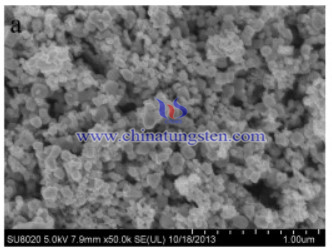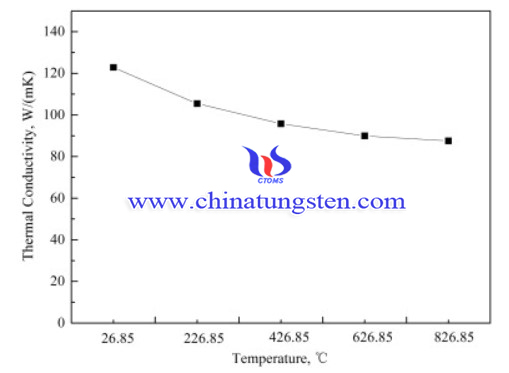Chemical Method for Preparing W/Tic Alloy from Ammonium Paratungstate
- Details
- Category: Tungsten Information
- Published on Thursday, 31 December 2020 17:35
Tungsten and its alloys are the major materials applied in fusion reactors owing to their high melting point, high thermal conductivity, high strength at elevated temperatures, low sputtering yield in radiation environment.
Some disperse second-phases particles are usually added to tungsten to enhance its performance. Examples include La2O3, Y2O3, HfO2, or Titanium carbide (TiC). These second-phase particles can inhibit recrystallization and improve the high-temperature strength and creep resistance by hindering grain boundary sliding and stabilizing the micro-structure when exposed to high temperature.

A W/TiC nano material has been reported to be synthesized by wet chemistry and spark plasma sintering. TiC and ammonium paratungstate (APT) have been applied as precursor materials. The synthesis processes are as follow:
Appropriate amount of oxalic acid (C2H2O4·2H2O) was dissolved in deionized water to form a clear solution, the 1.0 wt.% nano-sized TiC particles (commercial powder, particle size about 50 nm, purity 99.9%) was added into the solution. The amount of TiC nano-particles was calculated by stoichiometry. APT was used as tungsten source. APT was dissolved in the above solution of oxalic acid with TiC powder. The W/TiC precursor was obtained by stirring and evaporating the mixture solution in a methyl silicone oil bath at 165 °C.

The precursor was ground and then heated in a tubular furnace reduced by high-purity hydrogen in a tubular furnace at a heating rate of 5 °C/min. The heating temperature profile was raised to 200, 500 and 800 °C, and isothermal for 30, 60 and 60 min respectively. The samples were left in the furnace to cool down to room temperature at the same rate of 5 °C/min under hydrogen flow. The reduced W/TiC powder was consolidated using SPS (FCT Group, SE-607, Germany). The powder is loaded in an electrically and thermally conductive graphite die with a diameter of approximately 20 mm, and then a DC current is applied in pulses and assisted with a uniaxial high mechanical pressure during the process . At the initial stage, the sample was heated to 450 °C and dwelled for 3 min to obtain a stabilized pressure. The sample was then heated to 700 °C at a rate of 100 °C/min and dwelled for 2 min to relieve the residual gas in this powder. This sintering stage was carried out at vacuum condition and the following sintering process was carried out at a protective Ar atmosphere which was used to prevent the oxidation of the sample. During the process the pressure stayed at 9.6 MPa for 3 min, and then uniformly increased to 47.8 MPa, which was then kept constant throughout for the following sintering processes. Simultaneously, the sample was heated to 1350 °C at a heating rate of 100 °C/min. At the following stage, the sample stayed at 1350 °C for 10 min, and subsequently heated to 1750 °C at the same heating rate. To slow the rise of the temperature, the sample was heated to 1800 °C at a heating rate of about 50 °C/min. The sample was sintered at 1800 °C for 3 min, and then cooled down to room temperature at a cooling rate of about 100 °C/min, the pressure uniformly decreased at the same time.
In conclusion, W/TiC alloy could be prepared by a chemical method, and the alloy was sintered by SPS. After sintering, the relative density of W/TiC alloy could reach to 99.0%. W/TiC alloy possess high thermal stability at high temperature. The thermal conductivity of the sintered specimen was 122.89 W/mK at room temperature and has high thermal stability at high temperature.
- APT Manufacturer & Supplier, Chinatungsten Online: ammonium-paratungstate.com
- Tungsten News & Prices of China Tungsten Industry Association: www.ctia.com.cn
- Molybdenum News & Price: news.molybdenum.com.cn
- Tel.: 86 592 5129696; Fax: 86 592 5129797; Email: sales@chinatungsten.com



 sales@chinatungsten.com
sales@chinatungsten.com